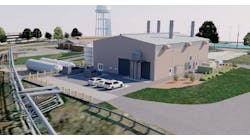Rogue lawn mowers. Toppling Cranes. Frogs and snakes. You never know what will cause power outages and get people thinking about microgrids.
Photo by Antonio Guillem/Shutterstock.com
Eaton’s new Blackout Tracker Annual Report shows 3,879 instances last year when having more microgrids would have been nice. That’s the number of times the power went out for more than 48 minutes, affecting 18 million people in the United States.
All-in-all 2016 was a pretty bad year when it comes to power outages — 17.9 million lost power, up from 13.2 million in 2015. The number of power outages rose nine percent.
Natural disasters and trees falling on wires caused a lot of the carnage; 1,279 outages, the highest total in three years. Faulty equipment was the second largest cause (925) followed by unknown reasons (848).
Vehicle accidents accounted for 483 outages, and it wasn’t just cars and trucks. Chicago firefighters responded to reports on August 3 of smoke from a lawn mower that apparently knocked over an electrical box, shorting out some wires and causing a small outage. In New Britain, Connecticut, a crane fell over onto power lines, leaving 1,444 people in the dark on April 21, according to the blackout tracker.
Animal-kingdom culprits caused 169 outages. Squirrels retained their position as top critter for achieving a lights-out. They were accompanied by birds, frogs, snakes, raccoons, beavers, and a lion and a bear.
Cost to the economy of power outages
Power outages are costly to the US economy. Eaton pegs monetary damages from power outages, surges and spikes at more than $150 billion.
Data centers are particularly worrisome. A 2016 report by the Ponemon Institute found the average cost of a data center outage in 2015 was $740,357, up 38 percent from 2010. A survey of more than 400 information technology professionals, combined with a separate cost-of downtime study by IHS Markit, places the cost of a network outage at more than $9,000 per minute. Large enterprises can lose tens of millions of dollars every hour their networks are down, according to the blackout tracker.
“Even worse, nine out of 10 large corporations reported that they had experienced at least one network outage in the past year, and 69 percent endured two or more — with some 60 percent of network outages lasting more than an hour,” Eaton said in its blackout tracker report.
Eaton has tracked power outages since February 16, 2008. Data for the report is taken from broadcast news reports, newspapers, websites (including those of newspapers and TV stations) and personal accounts.
Follow Microgrid Knowledge on Twitter @MicrogridNews.







